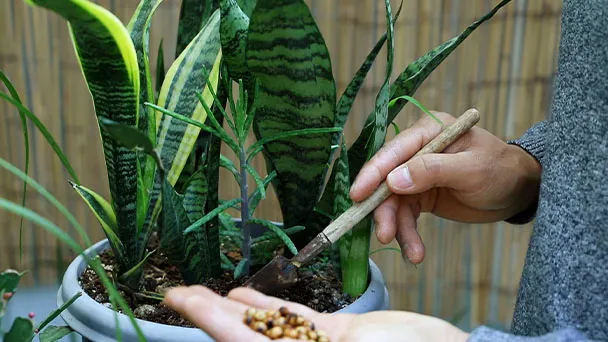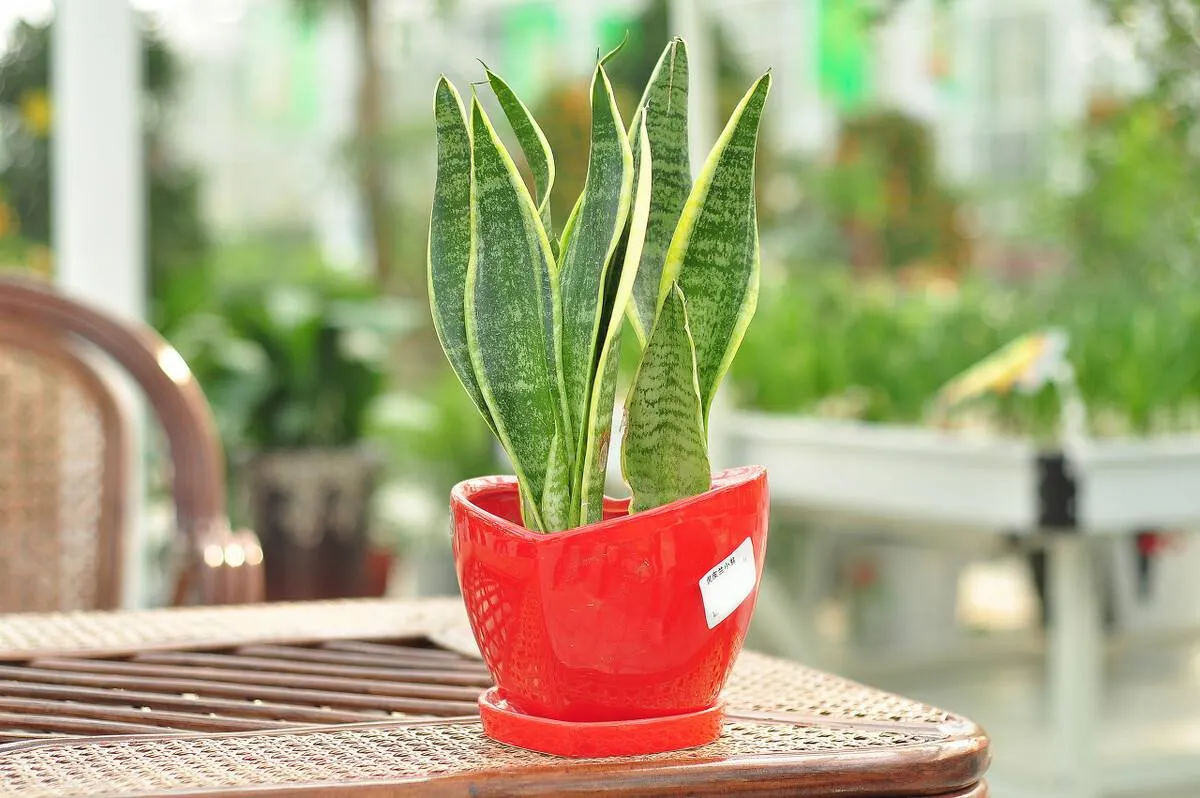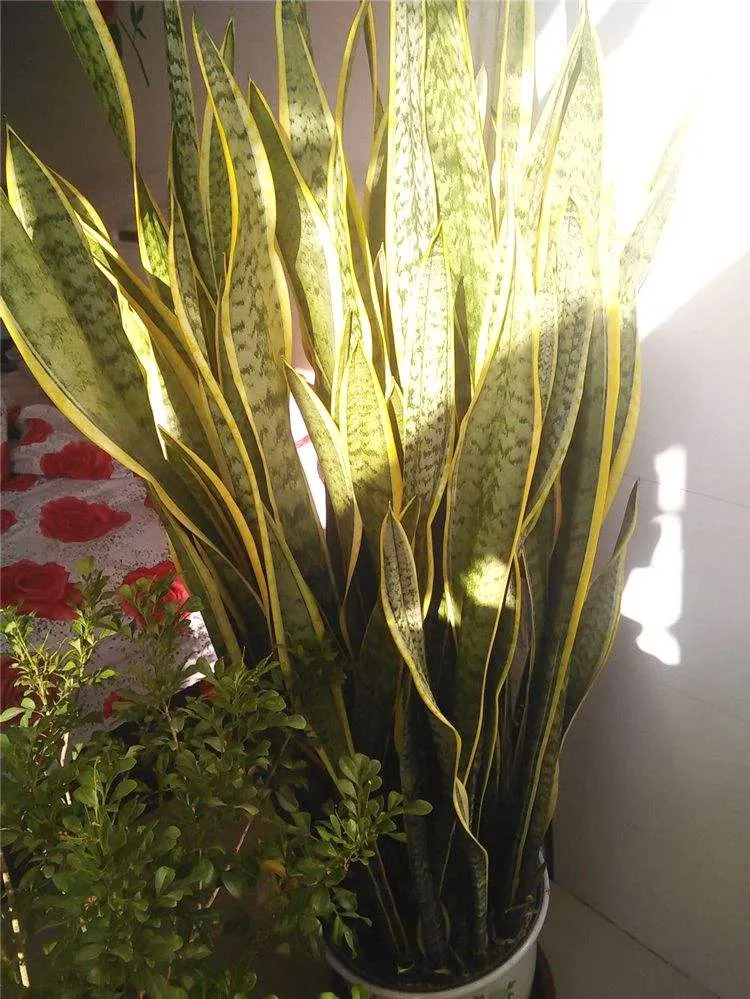How To Fix Snake Plant Root Rot (Sansevieria Trifasciata)
Written by Ivy
Dec 16 2022

The root rot of snake plant is mainly caused by excessive watering, which leads to ponding in the soil at the basin bottom and rot of plant roots. The soil viscosity is too strong, the drainage permeability is weakened, and the root system cannot breathe normally. Excessive fertilization leads to the transpiration and heating of organic matter in the soil and burns the root system. At this time, we should dig out the root system of snake plant, trim the rotten root system, apply carbendazim, dry it and then plant it.
As long as the wound of root rot snake plant is dried, it will be very simple for us to plant. When planting, do not choose too large basin, do not choose deep basin. If soil is mixed, configure soil with better air permeability. It is best to add a certain amount of river sand to the soil and directly pour water into root rot snake plant when it is planted, because there is no problem in watering the wound when it is dry, When watering, don't forget to add rooting liquid into the water, and then put it in a place where scattered light can be seen, so that it can slowly grow the roots. As long as the root system grows, the root rot snake plant will slowly restore the fullness of its leaves. After it starts to grow, we can gradually maintain it normally, give more light to snake plant normally, and use some fertilizer normally to make it grow rapidly.
Signs of Snake Plant Root RotCauses of Snake Plant Root RotOverwateringPoor Drainage Causes Snake Plant Root RotExtra Large Pot Causes Snake Plant Root RotLow TemperatureWatering In Dormant PeriodHow To Save Snake Plant From Root RotSnake Plant Root Rot AftercareWatering methodFertilization methodPropagation method
Signs of Snake Plant Root Rot
- Soft and Jelly-Like leaves
- Dark, Soft Spots Near the Base or Stem
- Snake Plant Leaves Wilting
- Snake Plant Turning Yellow And Soft
- Black Mushy Roots
Causes of Snake Plant Root Rot
Overwatering
Too much watering will lead to rotten roots of snake plant. Snake plant has underdeveloped roots and poor flood resistance. Watering too much will lead to ponding in the soil at the basin bottom. Soaking the roots in water for a long time will lead to rotten roots of overwatering snake plant. In rainy seasons, snake plant roots rot most easily. (Read More about saving overwaterig snake plant.)Poor Drainage Causes Snake Plant Root Rot
The soil is too viscous, the soil is not loose enough, and the ventilation and drainage are poor, which will also lead to the rotten roots of snake plant. In this case, due to lack of soil nutrients and thin air, snake plant roots cannot perform normal respiration, and the soil is airtight. The applied organic fertilizer will transpiration and heat in the soil, burning the roots and producing rotten roots.Extra Large Pot Causes Snake Plant Root Rot
In the family, the ventilation is relatively poor, and the soil permeability is also poor. If you directly plant a small snake plant into a large flowerpot and pour water on it, the soil is very much and dry very slowly, so the soil can not see dry and wet quickly, which will eventually lead to stuffy and rotten roots in snake plant, because there are many soil in large flowerpots, Wrap the root system tightly inside. The root of snake plant cannot grow quickly to the basin wall. In the end, rotten roots will appear inside. After rotten roots, rotten leaves will appear and the whole plant will die. Therefore, we must have a suitable flower pot.Low Temperature
The temperature in winter is very low, the temperature of well water and tap water is very low, and the indoor temperature is relatively high. Snake plant is afraid of low temperature in your indoor environment. If you directly pour cold water into the flower pot, the rotten roots and damaged roots of snake plant are easy to appear in winter after the hot soil experiences cold water, so if we water it, Try to keep the water temperature close to the air temperature.Watering In Dormant Period
Snake plant is in a semi dormant state in winter and basically does not grow. As long as we ensure that the soil is wet and the root system of snake plant will not dry, there will be no problem of rotten root of snake plant, so that we can survive the winter safely.How To Save Snake Plant From Root Rot
First of all, we should take the root rot snake plant out of the soil and clean up the roots directly without retaining any soil. Check the roots and trim the rotten roots thoroughly without retaining any rotten places. After the pruning is completed, we will apply carbendazim to the root rot snake plant for sterilization. If you don't have carbendazim, You can also find some grass ash and cigarette ash to apply to it. After applying it, put it in a cool and ventilated place. You can see some scattered light properly to make the snake plant wound heal slowly. When you see that the bactericide applied to the root rot snake plant wound slowly falls off, and the wound is white and dry, Prove that it has completely healed, and we can plant another one.As long as the wound of root rot snake plant is dried, it will be very simple for us to plant. When planting, do not choose too large basin, do not choose deep basin. If soil is mixed, configure soil with better air permeability. It is best to add a certain amount of river sand to the soil and directly pour water into root rot snake plant when it is planted, because there is no problem in watering the wound when it is dry, When watering, don't forget to add rooting liquid into the water, and then put it in a place where scattered light can be seen, so that it can slowly grow the roots. As long as the root system grows, the root rot snake plant will slowly restore the fullness of its leaves. After it starts to grow, we can gradually maintain it normally, give more light to snake plant normally, and use some fertilizer normally to make it grow rapidly.
Snake Plant Root Rot Aftercare
Watering method
We should water snake plant properly and grasp the principle of prefer dry to wet. Usually wipe the dust on the leaf surface with clean water to keep the leaf clean and bright. When new plants germinate at the root neck in spring, water more appropriately to keep the basin soil moist; The basin soil should also be kept moist in summer and high temperature season; After the end of autumn, the watering amount should be controlled and the basin soil should be kept relatively dry to enhance the cold resistance. During winter dormancy period, watering shall be controlled to keep the soil dry, and watering shall not be poured into leaf clusters. When using plastic pots or other decorative flowerpots with poor drainage, do not accumulate water, so as not to cause snake plant rot and fold down below the leaves.Fertilization method
Snake plant does not have high requirements for fertilizer. If only nitrogen fertilizer is applied for a long time, the spots on the leaves will become dim, so compound fertilizer is generally used. Fertilization should not be excessive. In the peak growth period, fertilizer can be applied 1-2 times a month, and the amount of fertilizer should be less. Standard compost can be used when changing pots at snake plant, and thin liquid fertilizer can be applied 1-2 times a month in the growing season to ensure green and thick leaves. You can also bury 3 holes of cooked soybeans evenly in the soil near the basin, 7-10 grains per hole, and be careful not to contact the root. Fertilization was stopped from November to march of the next year.Propagation method
We can cut the densely growing snake plant leaf clumps into several clumps. In addition to leaves, each clump also has a section of rhizome and buds, which can be planted in pots respectively. This method is suitable for all kinds of snake plant. It can raise seedlings all year round, but it is best in spring and summer. It can be carried out in combination with changing pots in spring.Read More:
- How Much Light Does Snake Plant Need
- How Often to Water Snake Plant
- Underwatered Snake Plant - Signs And How To Fix
- How To Save Overwatered Snake Plant
- Snake Plant: Grow & Care for Sansevieria Trifascia
- How to Get a Snake Plant to Bloom with Simple Ways
- Is Snake Plant Poisonous to Cats - How to Prevent
- What Are the Benefits of Snake Plants - Everything You Need to Know
- How to Reroot A Snake Plant With Simple Steps
Latest Updated
- Benefits of Bugleweed - 7 Science-backed Health Benefits
- Bugleweed Dangers & Side Effects - Is It Poisonous?
- How to Plant Evergreen Trees - What You Should Know
- When to Plant Evergreens - Grow Guide for Evergreen Trees
- 12 Wonderful Evergreen Shrubs for Your Garden
- 12 Popular Evergreen Plants with Pictures for Beginners
- When And How To Prune A Lilac Bush Like a Pro
- How to Grow & Care for Lilac Vine (Hardenbergia Violacea)
- Japanese Lilac Tree (Syringa Reticulata) Care & Propagation Guide
- Shumard Oak Pros and Cons - What to Know
Popular Articles
- Winter maintenance of Antirrhinum Majus
- How to Grow Terminalia Mantaly Tree
- How to Grow and Care for Crossostephium Chinense
- How to grow Antirrhinum Majus in spring
- Peristeria Elata (Dove Orchid) Profile: Info & Care Guide
- Underwatered Snake Plant (Sansevieria Trifasciata) - Signs And How To Fix
- How to Care for Brazilian Jasmine Plant (Mandevilla Sanderi)
- How to Grow & Care for Graptopetalum Purple Delight in Summer
- Rosa Chinensis (China Rose): Plant Growing & Care Tips
- How to Care for Baby Sun Rose (Aptenia Cordifolia)

